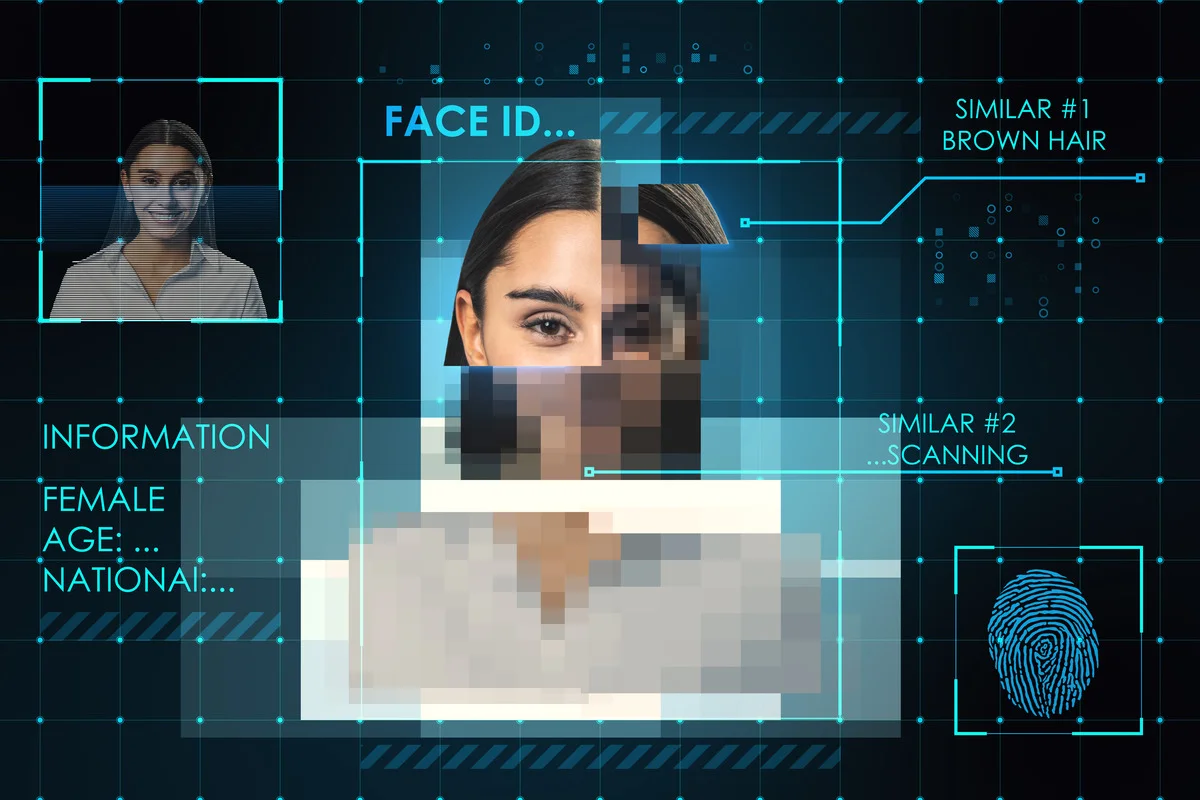Digital identity is the online representation of an individual’s personal information and activities. It includes usernames, passwords, social media profiles, and any other information related to a person’s online presence.
Managing and protecting one’s digital identity is critical for maintaining security and privacy in the virtual world. It is critical to understand the risks associated with sharing personal information online and take the necessary precautions to protect against threats such as identity theft and cyberattacks.
Now let’s explore digital identity in more detail, including its various forms and why it matters.
What Does Digital Identity Mean?
Digital identity refers to the data that computer systems use to identify individuals, organizations, applications, or devices.
For individuals, it involves the collection of personal data that is essential for facilitating automated access to digital services, confirming one’s identity on the internet, and allowing digital systems to manage interactions between different parties.
It is part of a person’s social identity on the internet, also known as their online identity. The scope of digital identities includes all data generated by an individual’s internet activities, including user credentials such as usernames and passwords, search histories, dates of birth, social security numbers, and records of online purchases.
A digital identity can develop organically. Individuals’ online actions create shadow data that can be used to obtain personal information. A digital identity can be a pseudonymous profile associated with a device’s IP address or a randomly generated ID. Digital identities are viewed as contextual in nature because users provide selective information when providing authentication information.
Identity theft and other privacy and security issues are associated with digital identities since profiles frequently contain elements of an individual’s true identity.
Identification of a person can also be obtained from pseudonymous profiles via cross-site data analysis. Although users can be identified in person with passports and licences, providing personally identifying information (PII) online could put the user at greater risk than benefit.
While digital identity protection is critical, risk management is also an important aspect of cybersecurity. You can protect your organisation’s digital assets by following a systematic process of identifying, analysing, evaluating, and responding to cyberattacks.
Read more in our post, “Risk Management in Cybersecurity: What It Is and Best Practices“.
Why is a digital identity important?
A digital identity is important because it enables people to use online services, make transactions, and communicate with others on the internet. Furthermore, having a secure digital identity protects personal information and prevents unauthorised access to sensitive data.
Aside from that, here are all of the reasons why digital identity is important:
- Online Trust: Digital identities serve as a means to establish trust in online interactions. They provide a way to verify the authenticity of individuals, organisations, and devices, ensuring that only authorised parties can access sensitive information or services.
- Access to Services: Digital identities are essential for accessing various online services, such as social media, banking, and e-commerce platforms. They enable secure authentication and authorisation, ensuring that only the right people can access the right information.
- Privacy Protection: Digital identities help protect personal privacy by controlling access to personal information. By managing who has access to your digital identity, you can limit the amount of data shared with third parties and safeguard your privacy.
- Security: Digital identities are crucial for ensuring security in online transactions. By verifying a person’s identity, businesses can prevent fraud, identity theft, and other types of cybercrime, protecting both individuals and organizations.
- Convenience: Digital identities can make online transactions more convenient. By using digital authentication methods, such as biometrics or digital certificates, individuals can quickly and easily access online services without the need for passwords or other forms of identification.
Digital identities also make it possible to integrate various platforms seamlessly, which eliminates the need for different logins and passwords. Businesses can increase efficiency and save time and frustration for users by streamlining access.
What are the types of digital identity?
There are three types of digital identities: user-centric, organisation-centric, and federated. Individuals control user-centric digital identities, whereas organisations manage organization-centric identities. Federated identities enable users to access multiple services with a single set of credentials, which improves convenience and security.
According to Advonum, the purpose, data elements, and requirements may differ, but the IDs share one feature: a numerical or alphanumeric code that serves as a unique identifier, significantly improving security.

Some examples of digital identities that we commonly use include:
- Employee ID: It is assigned by the employer and allows the employee to connect to the internal network, enter the building, and use other company resources. The employer, in turn, uses it to manage employee data, grant application permissions, track performance, and so on.
- Online shop / Customer ID: A customer ID is required for any secure online purchase. While using a customer ID provides increased security for the user, it also benefits providers in terms of data management, such as tracking customers’ transactions, preferences, or demographic information. However, it also enables them to improve customer service, personalise marketing campaigns, and even prevent fraud by detecting irregular patterns.
- E-banking ID: Security is also an important consideration here. The e-banking ID required to access online banking services typically consists of a username/password, contract number, and SMS or QR code. Customers who log in can view their bank account information and conduct transactions, such as paying bills or trading securities.
- Citizen ID: Governments improve public service and customer interaction by giving citizens 24/7 secure access to their online offerings. For example, citizens can order official documents online, saving time on in-person office visits. Every taxpayer also receives a personal identification number on the tax return they have to fill out, enabling them to electronically submit the paperwork.
What is real identity vs digital identity?
Real identity refers to the traditional, physical representation of a person’s identity, such as a driver’s licence or passport. It is the identity that exists in the real world and is used for various purposes, including proving one’s age, identity, and eligibility for certain services or transactions.
Digital identity, on the other hand, is the online representation of a person’s identity. It includes information such as usernames, passwords, email addresses, social media profiles, and online transactions.
Access to online services such as social media, banking, and e-commerce platforms requires digital identity, which can also be used to verify a person’s identity during online transactions.
The key differences between real identity and digital identity are:
- Physical vs Digital: Real identity is a physical representation of a person’s identity, while digital identity is a digital representation of a person’s identity.
- Verification Methods: Real identity is typically verified through physical documents, such as driver’s licences or passports, while digital identity is verified through a combination of data and attributes or behaviours that provide a reasonable level of certainty about a person’s authenticity.
- Accessibility: Real identity is limited to the physical world, while digital identity can be accessed from anywhere with an internet connection.
- Use Cases: Real identity is used for in-person transactions, while digital identity is used for online transactions and accessing online services.
Both real identity and digital identity are important for establishing a person’s identity in different contexts. Real identity is crucial for in-person transactions and verifying a person’s identity in the physical world, while digital identity is essential for accessing online services and verifying a person’s identity in the digital world.
Technical capabilities, such as backend frameworks, will be required to protect digital identities. These software frameworks make it easier for developers to create the backend of web applications and websites while also ensuring their security.
See our article, “Back End Frameworks: What It Is, Why It’s Popular, and How to Choose the Best“, for additional information.
Conclusion
In conclusion, it is impossible to overestimate the importance of digital identity in the current digital era. It affects our online behaviour, identity verification, and personal data security. In order to navigate the digital landscape securely and responsibly, individuals and organisations must have a thorough understanding of the nuances of digital identity.
To protect your company’s digital identity from cyber threats, you’ll need cybersecurity experts to assess vulnerabilities and implement necessary mitigation measures.
Looking for experts to help you protect your digital identity?
Nexa Lab security hardening services provide a wide range of cyber security services, including vulnerability assessments, application security enhancements, incident response planning, custom security strategies, access control and authentication, and security awareness training.
Nexa Lab was founded and established in Australia, with over 30 years of experience in the MSP and IT industries. With a commitment to cybersecurity, we prioritise protecting Australian businesses’ digital assets and sensitive data.




